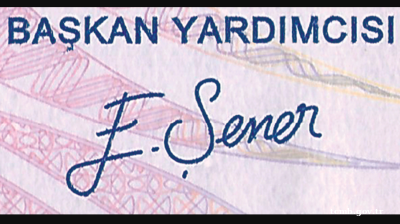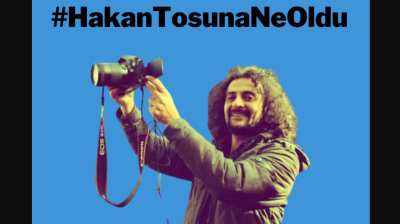Action is needed to stop Kyrgyz-Tajik border disputes spilling over into wider conflict, according to a cross-regional Institute for War and Peace Reporting (IWPR) discussion which heard that that the ongoing tensions had reached crisis point.
The most recent fighting between April 28 and May 1 was the worst in years, with 36 Kyrgyz citizens killed, 186 injured and about 58,000 forced to leave their homes.
According to the Tajik authorities, 19 people were killed, 87 wounded and some 15,000 local residents evacuated.
More than a third of the 600-mile border between the two countries is disputed, with regular clashes over access to resources.
Parviz Mullojanov, a political scientist from Tajikistan, told the May 18 online discussion that the conflict had reached a critical point of transition.
“This means that this conflict began as a network of small inter-community disputes caused by competition for access to water and land resources,” he said. “It did not affect either the state of relations between states, or the relationship between the two peoples, only tension at the community level.”
This began to change in 2014, when military units started to get involved.
“This year, for the first time, it reached the interstate level,” Mullojanov continued. “This does not mean that it will gain a foothold at this level. De-escalation may take place, but otherwise, we can expect its complete transition to the interstate level, affecting interethnic relations, internationalisation - that is, the involvement of third countries - an arms race and so on.”
Mullojanov noted that delimitation was particularly difficult in this densely populated region, with transboundary water resources and intercountry highways.
A main reason for the growing conflict was regional population growth amid decreasing resources, he continued, noting the social and economic impact of the militarisation of the borders on local residents.
The most tense area was in the Isfara-Batken zone, where the Tajik enclave of Vorukh is located inside Kyrgyz territory and some 70 disputed areas remain.
IWPR Central Asia regional director, Abakhon Sultonazarov, also stressed the importance of taking into account the underlying causes to current problems.
“The uneven distribution of resources in the Fergana valley, divided during the Soviet era between Kyrgyzstan, Tajikistan and Uzbekistan, the lack of jobs, poverty, and then the pandemic and the crisis caused by it, left their mark on the situation,” he said. “The postponement of the delimitation of borders, coupled with the above factors, led to the tragedy that we have witnessed.”
Internal stresses within both countries had further fuelled the conflict, he continued.
“We know that one of the most effective political instruments is the presence of an external enemy, this serves as a strong unifying factor, while eventually internal problems seem insignificant,” Sultonazarov said. “And such problems exist both in Kyrgyzstan and in Tajikistan, it is no secret. They refer to the adoption of a new constitution and the formation of a new political elite in Kyrgyzstan and the growth of socio-economic and political problems in Tajikistan and a number of others.”
Of particular concern, Sultonazarov said, was the use of propaganda and the involvement of the media of both countries.
He noted that the expert community and otherwise-respected media in both countries added to the incitement over the conflict rather than calming tensions, describing “an actual information war”.
Aydar Amrebayev, the director of the Centre for Political Studies in Kazakhstan, said that the situation was fed by wider issues of identity in Central Asia. He noted that nomadic populations were now settled, and the lives of different groups such as Turkic and Persian peoples were closely intertwined.
Understanding this dynamic, he continued, “is very important in order not only to interpret the events that have taken place, but also to try to find some positive way out of this situation, to take some kind of constructivist position”.
Governments had also failed their constituents, Amrebayev said.
“Recent events testify to the lack of professionalism of state bodies… when making certain decisions, state bodies should be sensitive to the needs and sensitivities of local communities which do not quite adequately perceive the decisions laid down in some agreements.”
Uzbek political scientist Farhod Tolipov said that border conflicts across the region tended to remain contained and low intensity, rather than functioning as a kind of proxy war as was common elsewhere in the world.
“And one of the distinguishing features of ‘our’ conflicts is that there is no antagonism between the states involved in these conflicts. There is no antagonism between Uzbekistan and Kazakhstan, at the official level. There is no antagonism at the official level between Tajikistan and Kyrgyzstan even,” he said.
This was an important factor that should be capitalised on, Tolipov continued.
“The approach to the problem of border delimitation in Central Asia should be innovative and forward-looking, based not on momentary interests and nationalistic feelings, but on a clear strategic program for the development of countries and the region as a whole,” he concluded.
Erica Marat, associate professor at the College of International Security at the National Defence University in Washington, said that an analytical rather than nationalist approach was now needed.
She advised a focus on shorter-term goals and humanitarian issues on both sides.
“Now it is very important to stabilize the situation in the border areas,” Marat said. Financially, psychologically. Rebuild their houses. You need to investigate and try to find agreement on what actually happened, a list of facts that both the Kyrgyz and Tajik sides can agree with.”
Then, she continued, “It is necessary to try to create conditions for the peaceful development of various communes through trusting relations between the two states, through trusting relations between the population.
“And when we find a balance, when the population will trust each other, when the population will be able to resolve disputes among themselves not through military interventions or provocative statements, but will be able to peacefully resolve their local problems, only then can we begin the official demarcation of territories.”
This article from the Institute for War & Peace Reporting (IWPR) originally appeared on iwpr.net here.
This publication was prepared under the "Giving Voice, Driving Change - from the Borderland to the Steppes Project" implemented with the financial support of the Foreign Ministry of Norway.
Features

Sri Lanka’s economic escape
Sri Lanka’s recovery over the past year reads like a narrow escape rendered into a cautious, albeit unfinished success story.

BEYOND THE BOSPORUS: Investigators feel collar of former Turkish central bank deputy governor
Regime gangs continue to hustle for gains. Some Erdoganist businessmen among the losers.

Journalist beaten to death in Istanbul as security conditions in Turkey rapidly deteriorate
Publisher, meanwhile, is shot in leg. Reporters regularly experience violence, judicial harassment and media lynching.

Agentic AI becomes South Korea’s next big tech battleground
As countries race to define their roles in the AI era, South Korea's tech giants are now embracing “agentic AI”, a next-generation form of AI that acts autonomously to complete goals, not just respond to commands.




